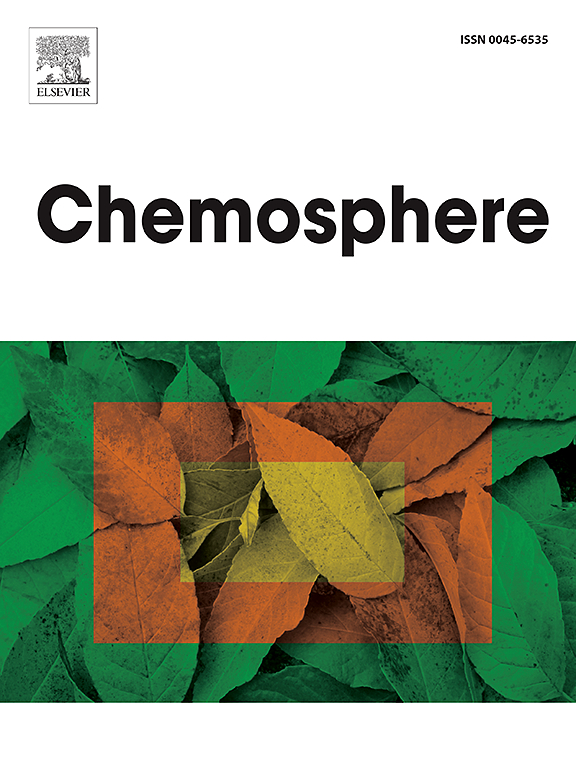Long-term exposure to ambient air pollution and the incidence of systemic lupus erythematosus
IF 8.1
2区 环境科学与生态学
Q1 ENVIRONMENTAL SCIENCES
引用次数: 0
Abstract
The relationship between air pollution and the risk of systemic lupus erythematosus (SLE) remains inconclusive. Here, we investigated the associations between long-term exposure to ambient air pollutants and incident SLE, based on a cohort of 502,004 participants free of SLE at baseline from UK Biobank. During a median of 13.65 follow-up years, 638 patients with SLE were identified. For each increase of interquartile range in air pollutant concentrations, the hazard ratios (HRs) and 95% confidence intervals (CIs) of SLE were 1.15 (1.04–1.27) for nitrogen dioxide (NO2), 1.08 (1.00–1.17) for nitrogen oxides (NOx), 1.13 (1.03–1.24) for particulate matter with the diameters ≤2.5 μm (PM2.5), 1.06 (0.99–1.14) for particulate matter with diameter between 2.5 μm and 10 μm (PMcoarse), and 1.10 (1.02–1.18) for particulate matter with diameter ≤10 μm (PM10), respectively. A non-linear relationship of PMcoarse with SLE risk was detected by using restricted cubic spline models (Pnon-linearity = 0.009), but not for the remaining air pollutants. Furthermore, smoking and long-term exposure to PM pollutants had significant additive interaction on SLE risk, with a relative excess risk of additive interaction (RERI) of 0.07 (95% CI: 0.02–0.09) for PM2.5, and 0.05 (95% CI: 0.01–0.08) for PM10. Additive interactions were also observed for genetic risk and PMcoarse (RERI: 0.04, 95% CI: 0.00–0.07) and PM10 (RERI: 0.04, 95% CI: 0.02–0.06) on SLE risk. In conclusion, our findings emphasize the significance of evaluating the impacts of long-term exposure to ambient air pollutants in preventing SLE, and highlight the necessity to identify individuals who smoke and have a high genetic risk to minimize the harmful effects of air pollution on the development of SLE.

长期暴露于环境空气污染与系统性红斑狼疮的发病率。
空气污染与系统性红斑狼疮(SLE)发病风险之间的关系仍无定论。在此,我们以英国生物库中 502,004 名基线时未患系统性红斑狼疮的参与者为基础,研究了长期暴露于环境空气污染物与系统性红斑狼疮发病之间的关系。在中位数为 13.65 年的随访期间,共发现了 638 名系统性红斑狼疮患者。空气污染物浓度每增加一个四分位间范围,系统性红斑狼疮的危险比(HRs)和 95% 置信区间(CIs)分别为:二氧化氮(NO2)为 1.15(1.04-1.27),氮氧化物(NOx)为 1.08(1.00-1.17),颗粒物为 1.13(1.03-1.直径≤2.5 μm 的颗粒物(PM2.5)为 1.06(0.99-1.14),直径介于 2.5 μm 和 10 μm 之间的颗粒物(PMcoarse)为 1.10(1.02-1.18),直径≤10 μm 的颗粒物(PM10)为 1.10(1.02-1.18)。通过使用限制性三次样条模型(Pnon-linearity=0.009),检测到 PMcoarse 与系统性红斑狼疮风险之间存在非线性关系,但其余空气污染物则没有这种关系。此外,吸烟和长期暴露于可吸入颗粒物污染物对系统性红斑狼疮风险有显著的加性相互作用,PM2.5的加性相互作用相对超额风险(RERI)为0.07(95% CI:0.02-0.09),PM10为0.05(95% CI:0.01-0.08)。此外,还观察到遗传风险与 PMcoarse(RERI:0.04,95% CI:0.00-0.07)和 PM10(RERI:0.04,95% CI:0.02-0.06)对系统性红斑狼疮风险的相加相互作用。总之,我们的研究结果强调了评估长期暴露于环境空气污染物对预防系统性红斑狼疮的影响的重要性,并突出了识别吸烟和高遗传风险个体的必要性,以尽量减少空气污染对系统性红斑狼疮发病的有害影响。
本文章由计算机程序翻译,如有差异,请以英文原文为准。
求助全文
约1分钟内获得全文
求助全文
来源期刊

Chemosphere
环境科学-环境科学
CiteScore
15.80
自引率
8.00%
发文量
4975
审稿时长
3.4 months
期刊介绍:
Chemosphere, being an international multidisciplinary journal, is dedicated to publishing original communications and review articles on chemicals in the environment. The scope covers a wide range of topics, including the identification, quantification, behavior, fate, toxicology, treatment, and remediation of chemicals in the bio-, hydro-, litho-, and atmosphere, ensuring the broad dissemination of research in this field.
 求助内容:
求助内容: 应助结果提醒方式:
应助结果提醒方式:


